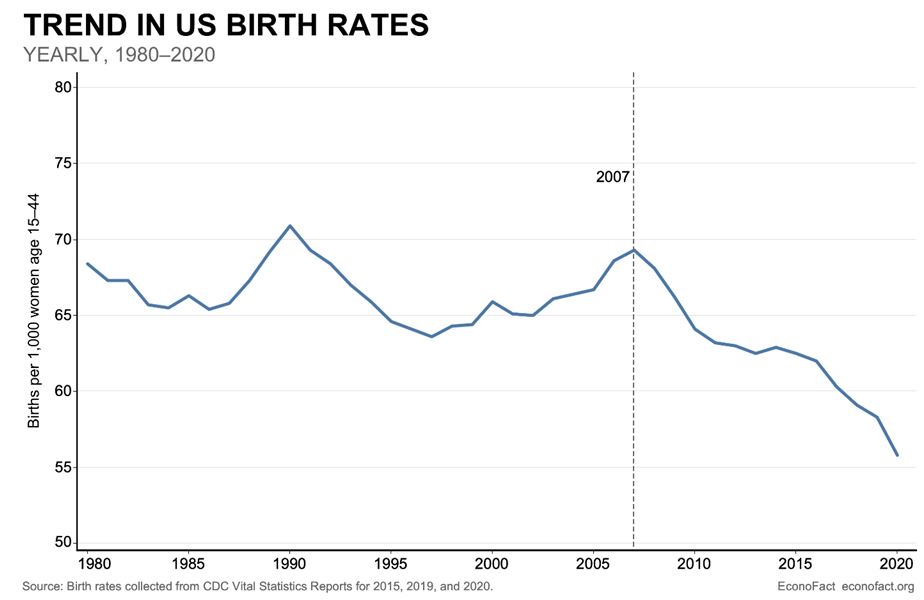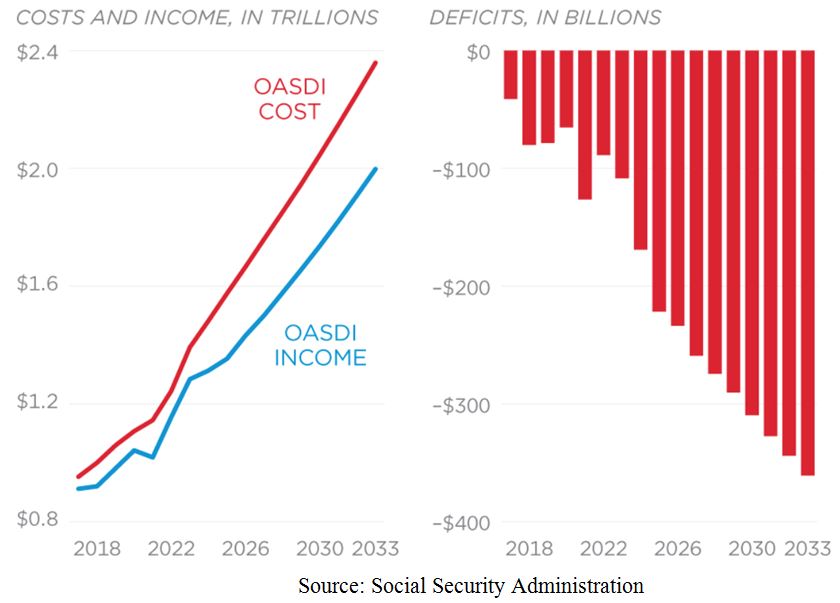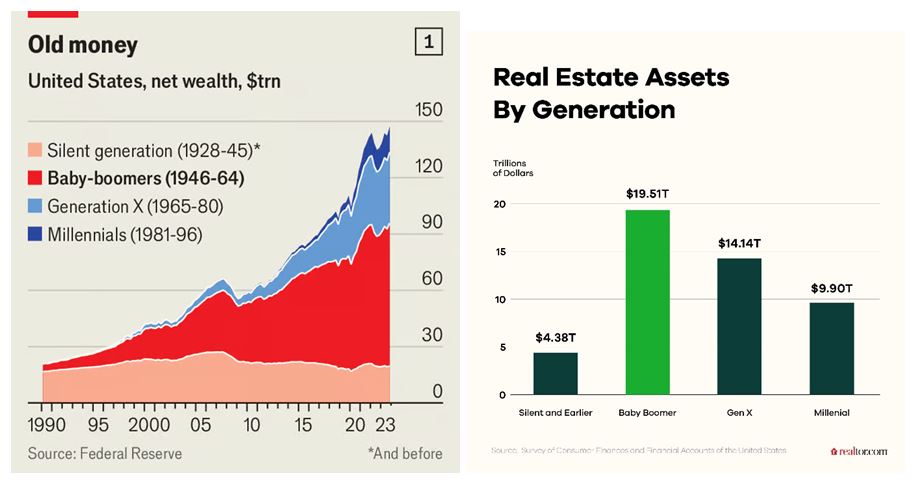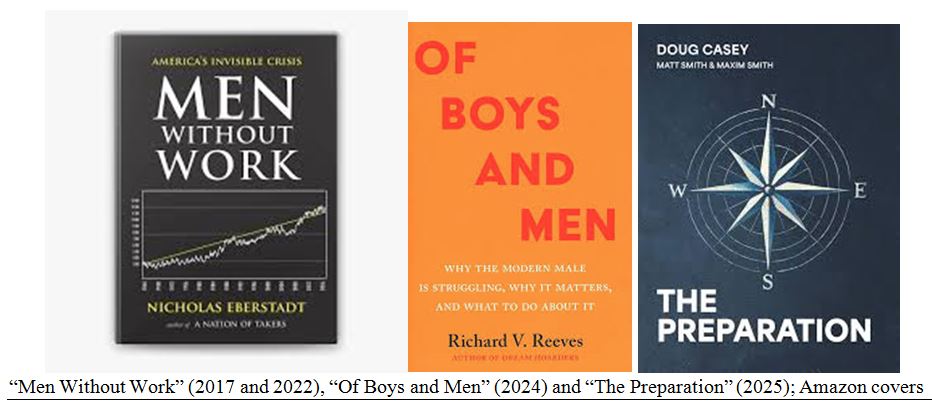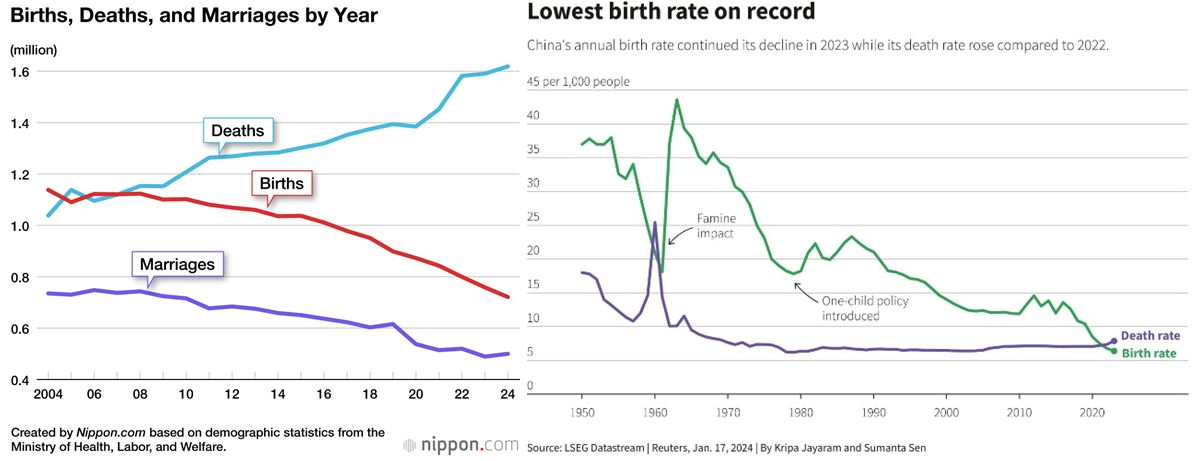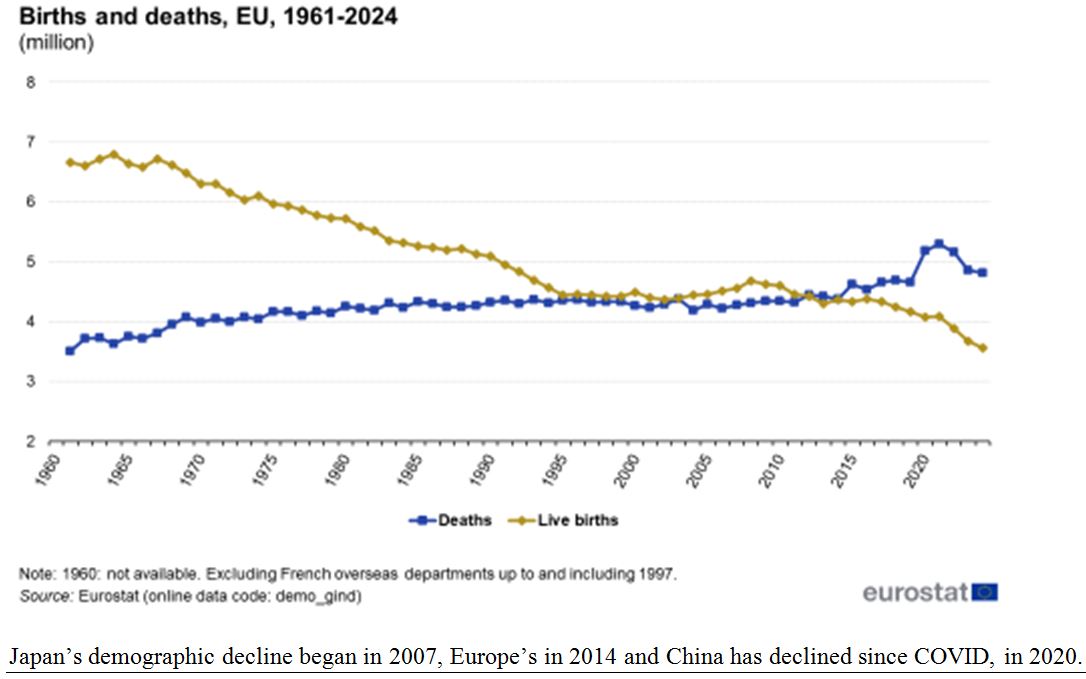by Gary Alexander
August 26, 2025
It’s time for my annual Labor Day report on the nature of work – beyond the headlines. While market traders, political pundits and a clueless media keep over-emphasizing the monthly jobs report, it is near-worthless, notoriously inaccurate and subject to wide revisions in future months, usually downward.
The Fed is charged with a dual mandate, one of which is to promote jobs and lower unemployment rates, as if they could change birthrates or engender worker motivation or change the nature of work accepted by a picky labor force. President Trump may fire one job counter in favor of another, but nothing will change long-term demographic trends, which include fewer workers and shifting views of what a job is.
If I may indulge in personal realities once again, at age 80, I don’t expect to see any beautiful longed-for great-grandchildren…ever. Five of our Gen-Z grand-kids (born 1996 to 2004) aren’t much interested in marriage, much less children, and they are not alone. The clear demographic trend is that Americans in child-bearing range (including Millennials, born 1980 to 1995) aren’t much interested in bringing new Americans into this world, so Social Security will suffer from ever-shrinking funding. If more young folk people don’t work to fund Social Security, their parents, grandparents – and they themselves – will suffer.
Graphs are for illustrative and discussion purposes only. Please read important disclosures at the end of this commentary.
This “birth dearth’ began in earnest after the financial crisis of 2007-08, but most youngsters cite global warming and other “existential threats” as their motivation for not bringing children into this sad world.
Well, we had three children, born 1968-72, when Russia had nuclear weapons aimed at us, the Vietnam War was raging, thousands of domestic terrorists bombed buildings and other terrorists hijacked airplanes on a weekly basis. We suffered Watergate at home, campus and urban riots killing hundreds, China’s Cultural Revolution and Brezhnev’s Soviet empire-building on each continent – not to mention several discredited threats like the Population Bomb, energy shortages, global famine and a Coming Ice Age.
Yes, the world has always been dangerous, but that’s no reason not to bring new lives into the world. We humans provide solutions more than problems, as humans are our Ultimate Resource (Julian Simon).
The Whole World is Retreating from Procreation: What Does That Mean?
Having too many people to feed is a well-publicized risk, and fear, but having too few people creates a whole new set of problems – and perhaps a larger problem set than over-population. A lower birthrate causes workforce shortages, fewer customers for goods and services, and far fewer taxpayers, specifically those making regular FICA contributions to fund retirement. The young also tend to start businesses more often than older Americans, and they have more energy to fuel future economic growth, as millions retire.
Expressed in terms of births per woman, a level of 2.1 is the minimum level for population growth, after you account for infant mortality and other risks, but in April of this year, the Centers for Disease Control and Prevention (CDC) announced that the total U.S. fertility rate in 2024 was 1.6 children per woman, or when stretched to five digits: 1,626.5 births per 1,000 women, or about 23% below replacement value.
This refusal to procreate is a generational time bomb, set to explode within a decade or two. The Social Security Administration says they will be bankrupt within a decade, but they’re technically bankrupt now.
Many young workers don’t expect to collect Social Security, so they respond, “So What?” but nothing is set in stone. Their refusal to have children will cause the outcome they fear – lower (or no) benefits, and during the bulk of their working life, they will suffer higher “contribution” levels into that dying system.
How long will it take before workers revolt and refuse to pay their FICA deductions or – in a more practical, less dangerous move – choose to work off the books, where FICA won’t take 10% of their pay?
The accountants in DC call Social Security “Old-Age, Survivors and Disability Insurance” (OASDI), and the Social Security administration itself is very concerned about current and future deficit projections:
Graphs are for illustrative and discussion purposes only. Please read important disclosures at the end of this commentary.
Beyond the current birth dearth, there is now an oversupply of unfilled job positions and a rising aversion to work, or – more favorably expressed – the search for “work-life balance” in one’s younger years, a noble ambition, but slightly impractical when you don’t have many life skills that employers will value.
To generalize a bit, Baby Boomers (born 1946 to 1964) entered adulthood by rejecting everyone over 30, but they wised up (and got rich) after age 30. They, like their parents in the Greatest Generation, created a wave of kids in Generation X (born 1965-80) and Generation Y (or Millennials, born 1980-95), while Generation Z (born 1996-2012) is less interested in work, marriage and children than their parents were.
Graphs are for illustrative and discussion purposes only. Please read important disclosures at the end of this commentary.
Three Books (and an article) Describing Conflicted Young Male Workers at a Crossroads
As I often do here, let me recommend three books which isolate the challenge, and a new solution:
- “Men Without Work” (2017, updated after COVID) by Nic Eberstadt, describes America’s “invisible crisis” of men shunning work. The work rate for American males aged 25-54 – their “prime working age” was lower in 2015 than in 1940, a time 17% unemployment as in the last year of the Great Depression. Today’s low jobless rate is mainly due to dropouts – those not seeking work. Today, Nic writes, nearly one in six prime working-age men has no paid work at all, and nearly one in eight is out of the labor force entirely, neither working nor looking for work, living in an Internet bubble at home.
- “Of Boys and Men: Why the Modern Male Is Struggling, Why It Matters, and What to Do About It,” by Richard Reeves (2024) is an overview of the rise of women and downfall of men in colleges and the labor force since the 1980s. Today, men represent only 42% of college students (age 18 to 24), down from 47% in 2011. Many have also rejected “dirty jobs,” according to Mike Rowe, so boys and men are subject to more “deaths of despair” (suicide and overdose), greater jobless rates and isolation.
- A solution is in “The Preparation,” released last week, authored by three generations of entrepreneurs: Doug Casey, age 79, along with a father-son team of Matt and Maxim Smith (age 20). The book’s teaser summarizes a better option than college and standard careers: “Skip the debt. Build the man. What if you could trade four stagnant years in lecture halls for four years of adventure—emerging as a debt‑free EMT, pilot, welder, web/app builder, rancher, and entrepreneur all in one? The Preparationis the field manual for young men (and parents who love them) who know the old college formula is broken and want a roadmap that forges competence, confidence, and value.”
As “The Preparation” demonstrates, there is something of a revolt against spending a fortune and four years in colleges, partying too much while hoping to advance your lifetime earnings potential with a voodoo math formula that no longer works (for most majors). Emil Barr wrote a great Op-Ed last week (August 19, 2025, Wall Street Journal), titled “‘Work-Life Balance’ Will Keep You Mediocre.” In it, he describes the value of creating companies at a young age and seeking to become independently wealthy at 30, when you have all the options of work-life balance” you treasure for the rest of your life – but don’t fall victim to youthful debt and disillusion through a work-life balance offering little value to employers.
Most of the World Has the Same Problem – Only Worse
America has some pockets of high birth rates, often in the South and Mountain West, and we assimilate immigrants better than other nations, so there is hope, but we’re accepting fewer immigrants in the Trump era, so this may lower our worker base (along with taxes collected, businesses started, and wealth earned).
This is not just a problem in the U.S. and Canada, Europe and Asia are even worse off in the trend toward lower birth rates, and they have a larger slice of older citizens, who need health care and regular checks.
Graphs are for illustrative and discussion purposes only. Please read important disclosures at the end of this commentary.
Graphs are for illustrative and discussion purposes only. Please read important disclosures at the end of this commentary.
This will have a significant impact on the world’s ability to keep working, while funding old-age benefits:
Maybe Zero Population Growth advocates will fund their own retirement from all the royalties of their doomsday books about an alleged “Population Bomb” coming in our lifetimes…but they’re still wrong.
The post 8-26-25: Labor Day Time Bomb: Fewer Births = Fewer Workers (and Lower Benefits) appeared first on Navellier.




